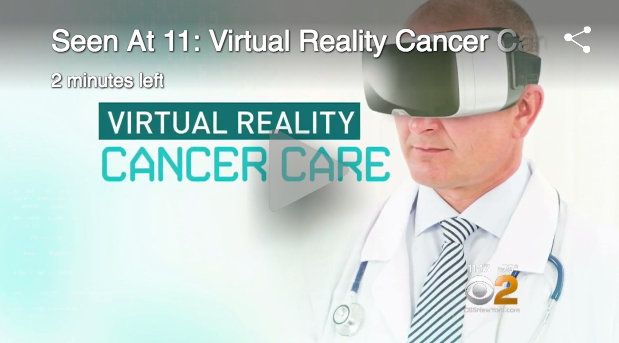Doctors using virtual reality to treat cancer patients
Virtual reality is just not for the gaming world as doctors are using it to help treat cancer patients. the technology allows doctors to get inside a patient’s cancer and pinpoint the cause.
“I can zoom in that protein structure,” said Alex Sigaras, research associate at Weill Cornell Medicine. “By moving my hands around, I can rotate that model.”
Doctors are already using virtual reality simulations to treat depression, substance abuse and even post-traumatic stress disorder.
“What we’re doing in using this kind of treatment is helping the person recall more of the story, if you will, so they can then process it and the cues to danger are extinguished,” Dr. Joann Difede said.
When it comes to cancer, the creators of this new technology use it to map genetic mutations drive the disease three-dimensionally. Other patient information, like MRI’s and pathology reports, can also be viewed, all on one interface.
“Instead of just looking at numbers of how the mutation occurs, you can see it in a more visual and colorful way,” Sigaras said.
Co-creator and associate professor Olivier Elemento, also with Weill Cornell Medicine and the Englander Institute for Precision Medicine, said virtual reality can help doctors better understand how a mutation or the protein it makes transforms a cell into cancer which, in return, will help them find a drug to better target it,
“The physician is able to browse all of this information, it will be like ‘Minority Report,’” Elemento said. “You’ve seen the movie where Tom Cruise is browsing things, pushing things around, bringing things in, we are trying to achieve the same thing.”
Humans are just visual animals and seeing a protein or mutation lets researchers see how to design a drug to fit and treat the cancer.
This virtual reality can be accessed by many doctors from anywhere in the world at the same time, so they can collaborate on treatment.
Learn more in the video below.



